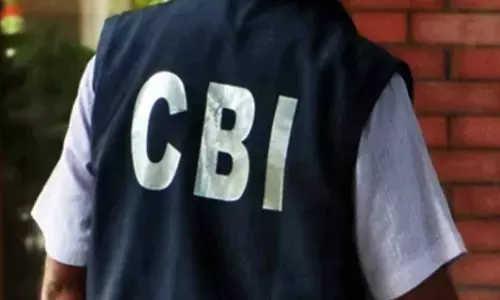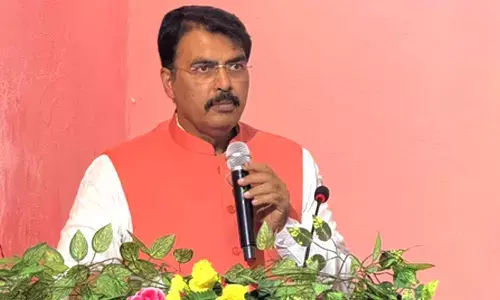Greater GER in higher edu key to bridge socio-economic gaps

EDUCATION not only transforms lives but also plays a critical role in building peace, eradicating poverty and driving sustainable development.
EDUCATION not only transforms lives but also plays a critical role in building peace, eradicating poverty and driving sustainable development. It is a human right for all throughout their lives. The Education 2030 Agenda was globally adopted in 2015 to 'ensure inclusive and equitable quality education and promote lifelong learning opportunities for all' by 2030. India is a strong votary of inclusive education, knowing well that a strengthened education system helps a country respond to contemporary and future global and domestic challenges with a greater amount of ease and conviction.
It paves the way for gender equality and equitable sharing of national opportunities and facilities among all irrespective of their caste and religion. Quality education from pre-school to higher education and beyond will always be the need of the hour for all nations, and India is not an exception at all! Having remarkably progressed in the field of education as a free nation, the gaps left out in making quality education available to the masses merit special attention to accelerate the pace of the country's socio-economic empowerment.
Less than 30 per cent gross enrolment ratio (GER) in higher education is too little to be complacent for a country as vibrant and robust as India. GER is quite high in developed countries. As per an estimate, the US has the highest GER at over 88.2 per cent, followed by Germany 70.3 per cent, France 65.6 per cent, UK 60.6 per cent, Brazil 51.3 per cent, China 49.1 per cent, Indonesia 36.4 per cent and India (27.4 per cent in 2017-18, 26.3 per cent in 2018-19). The two nations below India are South Africa (22.4 per cent) and Pakistan (9.4 per cent). A strong argument given about India's lower GER in higher education is the non-eligibility of a large population of students to enroll themselves in colleges as they don't successfully complete Class XII education.
It is a fact which ideally qualifies to be a crisis as well as an opportunity for policy makers. Continuing education beyond Class XII requires wholesome removal of the bottlenecks in general and social and financial constraints of the masses in particular. None of us will disagree with the fact that the majority of our students who are not able to continue their education beyond 10 + 2 are girls and boys from weaker sections of society, mainly OBCs, SCs, STs and other poor. Almost 90 per cent students from well- to-do families pursue their higher studies with ease. Chronic poverty, lack of facilities and near total absence of facilities continue to be a serious stumbling block in their path for higher studies. Those who still manage to swim against odds have to struggle a lot to cope with academic and other societal pressures to stay afloat.
Here is an example – as per an estimate, in the Indian Institute of Science (IISc) Bengaluru, only 2.1 per cent candidates admitted to the PhD programmes were from ST category, 9 per cent were from SC and 8 per cent from OBC categories during 2016-2020. In 17 Indian Institutes of Information Technology (IIITs), only 1.7 per cent of total PhD candidates were from ST category, 9 per cent from SC and 27.4 per cent from OBC. In 2019, then Union HRD Minister Ramesh Pokhriyal Nishank, in a written reply to the Parliament, said that 48 per cent of students dropping out of the IITs and over 62.6 per cent from IIMs are from SC, ST and OBC categories. It is a proven fact that quality higher education remains a distant dream for poor students. It is still the privilege of the rich and elite among us, which is certainly not an ideal situation for our country at all. Therefore, India has a huge opportunity to transform this crisis into a tool to empower every aspiring student – rich or poor – with quality higher education by ensuring a minimal dropout rate. It is certainly easier said than done but can be accomplished with a determined and inclusive resolve.
The increasing social sector spending by the government is a positive sign. The Centre and the state governments earmarked an aggregate of Rs 71.61 lakh crore for spending on social service sector in (BE) 2021-22. A one big push will make the difference in a sustainable manner. An assessment for the pre-pandemic year 2019-20 for which data is available reveals that the number of recognised schools and colleges continued to increase between 2018-19 and 2019-20, except for primary and upper primary school. Priority to drinking water and sanitation in schools under the Jal Jeevan Mission, Swachh Bharat Mission as well as under Samagra Shiksha Scheme has been instrumental in providing required resources and creating assets in schools. As on January 19, 2022, under the Jal Jeevan Mission 8,39,443 schools were provided with tap water supply. The year 2019-20 also saw a decline in drop-out rates at primary, upper primary and secondary levels. In 2019-20, school dropout rate at primary level declined to 1.45 per cent from 4.45 per cent in 2018-19. The decline is both for boys and girls. The decline has also reversed the trends of increasing drop-out rates during the previous two years.
The year 2019-20 saw an improvement in GER at all levels and improvement in gender parity. In 2019-20, 26.45 crore children were enrolled in schools. This helped to reverse the declining trend of GER between 2016-17 and 2018-19. During the year, schools enrolled about 42 lakh additional children out of which 26 lakhs were in primary to higher secondary levels and 16 lakhs were in pre-primary as per the Unified District Information System for Education Plus (UDISF+).
It is the right time to increase GER and ensure quality benchmarking in education at all levels. GER in higher education recorded at 27.1 per cent in 2019-20, slightly higher from 26.3 per cent in 2018-19, which is not in sync with the vision of making India a $5 trillion inclusive economy. The government has taken multiple initiatives at revolutionising the higher education ecosystem such as amendment to National Apprenticeship Training Scheme, Academic Bank of Credit, e PGPathshala, Unnat Bharat Abhiyan and scholarship for weaker sections.
India needs to go for a massive expansion in free and affordable accommodation for poor students on the campuses of top seats of learning to take care of growing aspirations of them to equip themselves with quality higher education, which they are not able to do for want of necessary wherewithal and resources. They are raring to throng campuses of higher education if they are hand held properly. As per the Annual Status of Education Report (ASER) 2021, despite pandemic enrolment in the age cohort of 15 to 16 years improved as the number of 'not enrolled' children in this age group declined from 12.1 per cent in 2018 to 6.6 per cent in 2021! Needless to say, the young wish a lot to study but are not able to cope with constraints. Let India focus on their educational empowerment during Amrit Kaal – that is the next 25 years! When we celebrate the centenary of our Independence, our GER in higher education should be 100 per cent.













